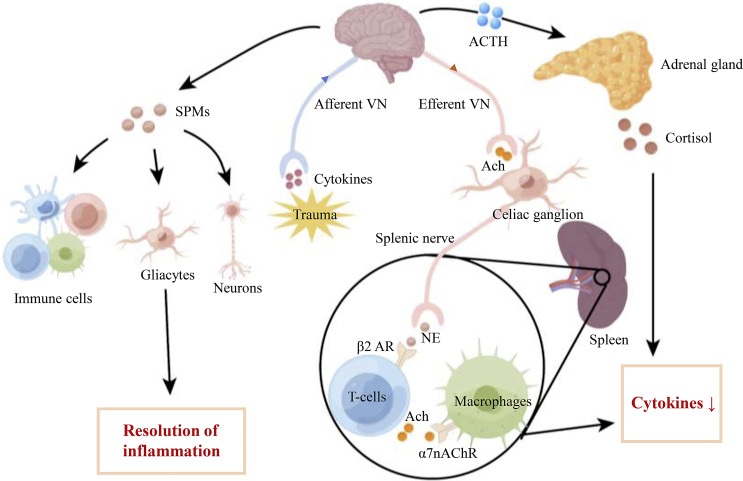Fig. 2.
Schematic illustration of the anti-inflammatory effect of the vagus nerve stimulation (VNS). The activation of VN may induce anti-inflammatory effects through the CAP, the hypothalamic-pituitary-adrenal axis pathway, and the production of SPMs. VNS activates VN efferents to release acetylcholine (Ach) in the coeliac ganglia and make a synapse with the sympathetic splenic nerve. Norepinephrine released from the splenic nerve binds to the β2 adrenergic receptor of T cells that release Ach. Ach then binds to the α7 nicotinic Ach receptor expressed on macrophages, leading to a decrease of cytokines production. VNS also stimulates the HPAA, causing the brain to release adrenocorticotropic hormone, which acts on the adrenal glands and then promotes cortisol production. Furthermore, VNS may induce the production of SPMs acting on their receptors which are expressed on immune cells, gliacytes, and neurons to modulate inflammation and neuroinflammation. Ach: acetylcholine; ACTH: adrenocorticotrophin hormone; NE: norepinephrine; SPMs: specialized proresolving mediators; VN: vagus nerve; β2 AR: β2 adrenergic receptor; α7nAChR: α7 nicotinic Ach receptor; HPAA, hypothalamic-pituitary-adrenal axis.

